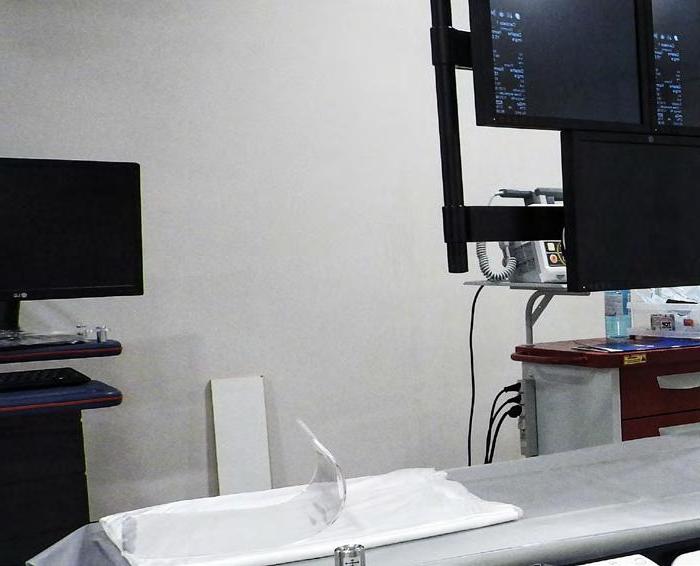
7 minute read
09 Open markets for public procurement
09
Open markets for public procurement
Value Innovation Equal Access Quality
Value quality and do not limit treatment or diagnostic options
Public procurement allows purchasing processes that use transparent, predictable rules and can promote healthy competition. It also allows shared purchasing and provides the Chinese government with an important tool for controlling prices over volume, as well as ensuring transparency of anti-corruption efforts. Recent criticism of Chinese purchasing practices, however, has centered on the suggestion that procedures are too price-oriented and pay insufficient attention to quality criteria. Additionally, there have been allegations of localization and discriminatory practices.
Core challenges:
.Localization: The use of product lists and restrictions on buying imported goods may favor domestic companies in public tendering processes. MedTech: Despite the Working Plan 2017/2018 to abolish anti-competition policies, some provinces are issuing administrative notices that restrict the use of imported high-value medical devices 134 . Additionally, the process of localizing highly innovative medical technologies to decrease costs and support local manufacturers is supported at the highest level of the Chinese government. The National Health Commission (NHC) uses product lists, which list a selection of medical products that health care institutions should purchase from local manufacturers. 135 Domestic market share targets for Chinese companies in the medical device sector,
134 Urgent notice on strengthening accountability and strictly controlling unreasonable growth of medical expenses, Sichuan HFPC, see tieba.baidu. com/p/5449562416?redtag=1912952024. Chinese source? 135 European Chamber of Commerce in China (EUCCC), “Healthcare Equipment
Working Group”, European Business in China Position Paper 2018/2019, pp. 248, <https://www.europeanchamber.com.cn/en/publications-archive/727/
Healthcare_Equipment_Working_Group_Position_Paper_2019_2020> (accessed 29.05.2019).
as set out in China Manufacturing 2025, are a further challenge. Given such problematic practices, the German health care industry calls for elimination of localization requirements, which lead to discrimination against foreign bidders. More clarification and official guidance from the Chinese government are also necessary.
Emphasis on price and volume over quality and
innovation: A number of sectors face the challenge of aggressive price negotiation practices that fail to value highly innovative products and tend to exclude them from the procurement process.
Pharma: The Chinese government has overhauled municipal and provincial procurement regulations with price and volume-based pooled procurement (VBP) pilots for drug purchasing. The government has applied VBP nationwide since September 2019. Specifically, in March 2019 the government started implementation of the 4+7 Cities pilot program. This is a VBP that targets off patent originators and generics that have passed the Generic Quality Consistency Evaluation (GQCE) and centralizes procurement procedures previously conducted by individual hospitals. The 4+7 Cities pilot 136 uses a “winner takes nearly all” approach, where a 70 percent market share goes to the single bidder offering the lowest price for an active substance. The remaining 30 percent market share is awarded to competitors who set prices in a race to the bottom. Overall prices for the first wave of molecules selected for the pilot program dropped by 52 percent, with some dropping by as much as 96 percent. In September 2019, the Chinese government conducted VBP tender for the 25 active substances of the 4+7 Cities pilot also for the rest of the market, and extended VBP nationwide. In January 2020, the Chinese government conducted VBP tender for 33 new active substance with adjusted rules for the nationwide market. While the introduction of VBP clearly addresses budget savings within an off-patent environment, it may limit innovation within the later part of a product’s lifecycle as there is no incentive, for example, to pursue
136 Bayer Pharmaceuticals, Healthy China 2030: Pressure on Prices Under Pooled
Procurement, https://pharma.bayer.com/healthy-china-2030-pressure-pricesunder-pooled-procurement (accessed on 22.07.2020); DecisionResourceGroup,
In China 4+7 equals quality generic medicines at affordable costs, https:// decisionresourcesgroup.com/blog/china-47-equals-quality-genericmedicines-affordable-costs/ (accessed on 21.07.2020). indication extensions within a year or two prior to patent expiration. Also, the selection parameters for VBP inclusion are not transparent and may not fully provide an innovation-friendly environment.
MedTech and diagnostics: Innovative medical devices and assistive technology such as prosthetics and orthotics often require individual configuration and commissioning. Manufacturing, assembling, and delivering the product to the customer require additional logistics and service processes. Tendering processes do not consider these costs, however, and tend to favor lower prices 137 .
–Diagnostics: Some provincial health authorities in China do not differentiate the price of diagnostics according to their quality and method. This is a barrier to the clinical use of modern diagnostic tests, and it prevents patients from receiving the most appropriate, reliable diagnostic results, potentially leading to increased treatment expenses and shorter survival. This includes, for example, cancer patients who could benefit from modern precision medicine in the form of targeted therapy or immunotherapy. This is true for patients with nonsmall cell lung cancer. Some of these patients can be treated with modern tyrosine kinase inhibitors or specialized immune drugs (checkpoint inhibitors), resulting in significantly longer overall survival, to name just one example.
–Precision medicine will change diagnostics, enable earlier diagnosis, and provide patients with better, more personalized treatment. However, developing and using precision medicines requires a better understanding of biomarkers or analysis of the patient or tumor genome prior to treatment. Enabling access to targeted genetic sequencing and/ or immunological testing are therefore key issues. Genetic testing, genome sequencing, and immune analysis are not properly reimbursed at this time and are therefore not available to most patients.
137
European Chamber of Commerce in China (EUCCC), “Healthcare Equipment Working Group”, European Business in China Position Paper 2018/2019, pp. 248; <https://www.europeanchamber.com.cn/en/publications-archive/727/ Healthcare_Equipment_Working_Group_Position_Paper_2019_2020> (accessed 29.5.2019).
Evaluation:
The health care industry recognizes and supports the wish to broaden access to diagnostic procedures and treatment. It is to some extent understandable that a volume-based approach has been chosen with the aim of reducing prices. High-quality, innovative, patient-centric medical and assistive products are, however, resource-intensive to develop and produce, and therefore come at a higher price. Ultimately, however, quality should not be compromised to the extent that patients are unable to access high-quality or innovative solutions.
Recommendations on Public Procurement:
Value quality and innovation: Guarantee fair, open tendering procedures that place the maximum possible emphasis on the quality, efficacy, and innovative value of medical products. Before issuing new calls for tenders, conduct comprehensive tender evaluation and avoid selecting winners based purely on the lowest price.
Promote use of the most economically advanta
geous tender (MEAT), e.g., as foreseen by the European Procurement Directive, in order to award contracts on the best value for money and promote a value-based care approach.
Support fast finalization of negotiations on the International Procurement Instrument (IPI), which aims at improving conditions under which EU businesses can compete for public contracts (public procurement) in third countries. The IPI would enable the European Commission to start a dialogue and negotiations—possibly resulting in charging a price penalty on bids from third country companies in case market access to their home market remains restricted for European companies.
Differentiate where necessary: Separate biosimilar from generic products and do not apply generics regulation to bio products as they are more complex. Differentiate between different diagnostic methods during procurement and pricing. Innovative diagnostics should be valued if they enable earlier or better treatment of patients. Ideally, there should be a nationwide guideline, which would ensure that provinces adapt their procurement and pricing negotiation standards accordingly.
Do not exclude customer-fit or patient-fit solu
tions: Design tendering processes that consider essential configuration, services, and logistics. The same tender processes should also not hinder patient-fit treatments and not overly reduce the variety of treatment options for doctors and patients. Allow hospitals and other service providers to purchase products according to the needs of patients, and to adjust and allocate procurement volumes accordingly. Rescind the requirement for individual hospitals and service providers to conduct second-round price negotiations. Similarly, promote precision medicine, through reimbursement by public insurance for genome sequencing and immune analysis. Provinces should aim for genomic testing to be available in a large number of the hospitals, with analysis carried out in specialist hospitals or central laboratories.
Guarantee equal access: We recognize the positive legislative change under the newly enforced PRC Foreign Investment Law and its implementation rules as of January 1, 2020, which aim to ensure national treatment and equal access to foreign invested enterprises in China. It is more important, however, to ensure strict enforcement of these regulations and avoid discriminatory practices.
Eliminate regulations that prevent access to local markets and fair and equal competition. These include product lists and domestic market share targets for local manufacturers of medical devices, both of which currently present an obstacle to a competitive market environment.
Apply fair competition principles: Instead of gradual price reductions or setting price limits to non-winning products that participate in VBP bidding.










